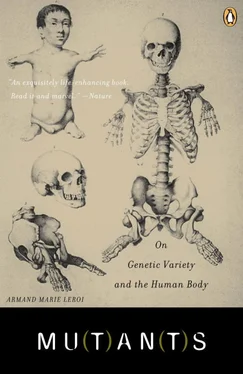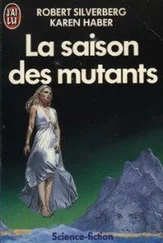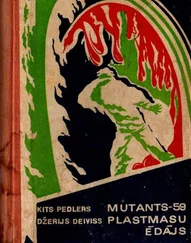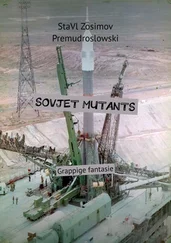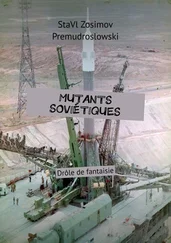Its first task is to make the raw materials of its organs. We are three-dimensional creatures: bags of skin that surround layers of bone and muscle that, in turn, support a maze of internal plumbing; and each of these layers is constructed from specialised tissues. But the embryo faces a problem. Of the elaborate structure that it has already built, only a minute fraction – a small clump of cells in the innermost sphere – is actually destined to produce the foetus; all the rest will just become its ancillary equipment: placenta, umbilical cord and the like. And to make foetus out of this clump of cells, the embryo has to reorganise itself.
The process by which it does this is called ‘gastrulation’. At about day 13 after conception, the clump of cells has become a disc with a cavity above it (the future amniotic cavity) and a cavity below it (the future yolk sac). Halfway down the length of this disc, a groove appears, the so-called ‘primitive streak’. Cells migrate towards the streak and pour themselves into it. The first cells that go through layer themselves around the yolk cavity. More cells enter the streak and form another layer above the first. The result is an embryo organised into three layers where once there was one: a gastrula.
The three layers of the gastrula anticipate our organs. The top layer is the ectoderm – it will become the outer layers of the skin and most of the nervous system; beneath it is the mesoderm – future muscle and bone; and surrounding the yolk is the endoderm – ultimate source of the gut, pancreas, spleen and liver. ( Ecto-, meso- and endo- come from the Greek for outer, middle and inner derm – skin – respectively.)
The division sounds clear-cut, but in fact many parts of our bodies – teeth, breasts, arms, legs, genitalia – are intricate combinations of ectoderm and mesoderm. More important than the material from which it builds its organs, the embryo has also now acquired the geometry that it will have for the rest of its life. Two weeks after egg met sperm, the embryo has a head and a tail, a front and a back, and a left and a right. The question is, how did it get them?
In the spring of 1920, Hilda Pröscholdt arrived in the German university town of Freiburg. She had come to work with Hans Spemann, one of the most important figures in the new, largely German, science of Entwicklungsmechanik , ‘developmental mechanics’. The glassy embryos of sea urchins were being bisected; green-tentacled Hydra lost their heads only to regrow them again; frogs and newts were made to yield up their eggs for intricate transplantation experiments. Spemann was a master of this science, and Pröscholdt was there to do a Ph.D. in his laboratory. At first she floundered; the experiments that Spemann asked her to do seemed technically impossible and, in retrospect, they were. But she was bright, tenacious and competent, and in the spring of 1921 Spemann suggested another line of work. Its results would provide the first glimpse into how the embryo gets its order.
Then as now, the implicit goal of most developmental biologists was to understand how human embryos construct themselves, or failing that, how the embryos of other species of mammal do. But mammal embryos are difficult to work with. They’re hard to find and difficult to keep alive outside the womb. Not so newt embryos. Newts lay an abundance of tiny eggs that can, with practice, be surgically manipulated. It was even possible to transplant pieces of tissue between newt embryos and have them graft and grow.
The experiment which Spemann now suggested to Hilda Pröscholdt entailed excising a piece of tissue from the far edge of one embryo’s blastopore – the newt equivalent of the human primitive streak – and transplanting it onto another embryo. Observing that the embryo’s tissue layers and geometry arose from cells that had passed through the blastopore, Spemann reasoned that the tissues at the blastopore’s lip had some special power to instruct the cells that were travelling past it. If so, then embryos that had extra bits of blastopore lip grafted onto them might have – what? Surplus quantities of mesoderm and endoderm? A fatally scrambled geometry? Completely normal development? Earlier experiments that Spemann himself had carried out had yielded intriguing but ambiguous results. Now Hilda Pröscholdt was going to do the thing properly.
Between 1921 and 1923 she carried out 259 transplantation experiments. Most of her embryos did not survive the surgery. But six embryos that did make it are among the most famous in developmental biology, for each contained the makings of not one newt but two. Each had the beginnings of two heads, two tails, two neural tubes, two sets of muscles, two notochords, and two guts. She had made conjoined-twin newts, oriented belly to belly.
This was remarkable, but the real beauty of the experiment lay in Pröscholdt’s use of two different species of newts as donor and host. The common newt, the donor species, has darkly pigmented cells where the great-crested newt, the host species, does not. The extra organs, it was clear, belonged to the host embryo rather than the donor. This implied that the transplanted piece of blastopore lip had not become an extra newt, but rather had induced one out of undifferentiated host cells. This tiny piece of tissue seemed to have the power to instruct a whole new creature, complete in nearly all its parts. Spemann, with no sense of hyperbole, called the far lip of the newt’s blastopore ‘the organiser’, the name by which it is still known.
For seventy years, developmental biologists searched in vain for the source of the organiser’s power. They knew roughly what they were looking for: a molecule secreted by one cell that would tell another cell what to do, what to become, and where to go.
Very quickly it became apparent that the potency of the organiser lay in a small part of mesoderm just underneath the lip of the blastopore. The idea was simple: the cells that had migrated through the blastopore into the interior of the embryo were naive, uninformed, but their potential was unlimited. Spemann aphorised this idea when he said ‘We are standing and walking with parts of our body that could have been used for thinking had they developed in another part of the embryo.’ The mesodermal cells of the blastopore edge were the source of a signal that filtered into the embryo, or to use the term that was soon invented, a morphogen . This signal was strong near its source but gradually became fainter and fainter as it dissipated away. There was, in short, a three-dimensional gradient in the concentration of morphogen. Cells perceived this gradient and knew accordingly where and what they were. If the signal was strong, then ectodermal cells formed into the spinal cord that runs the length of our back; if it was faint, then they became the skin that covers our body. The same logic applied to the other germ layers. If the organiser signal was strong, mesoderm would become muscle; fainter, kidneys; fainter yet, connective tissue and blood cells. What the organiser did was pattern the cells beneath it.
It would be tedious to recount the many false starts, the years wasted on the search for the organiser morphogen, the hecatombs of frog and newt embryos ground up in the search for the elusive substance, and then, in the 1960s, the growing belief that the problem was intractable and should simply be abandoned. ‘Science,’ Peter Medawar once said, ‘is the Art of the Soluble.’ But the soluble was precisely what the art of the day could not find.
In the early 1990s recombinant DNA technology was applied to the problem. By 1993 a protein was identified that, when injected into the embryos of African clawed toads, gave conjoined-twin tadpoles. At last it was possible to obtain – without crude surgery – the results that Hilda Pröscholdt had found so many years before. The protein was especially good at turning naive ectoderm into spinal cord and brain. With a whimsy that is pervasive in this area of biology, it was named ‘noggin’. By this time techniques had been developed that made it possible to see where in an embryo genes were being switched on and off. The noggin gene was turned on at the far end of the blastopore’s lip, just where the gene encoding an organising morphogen should be.
Читать дальше
